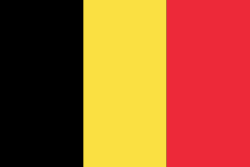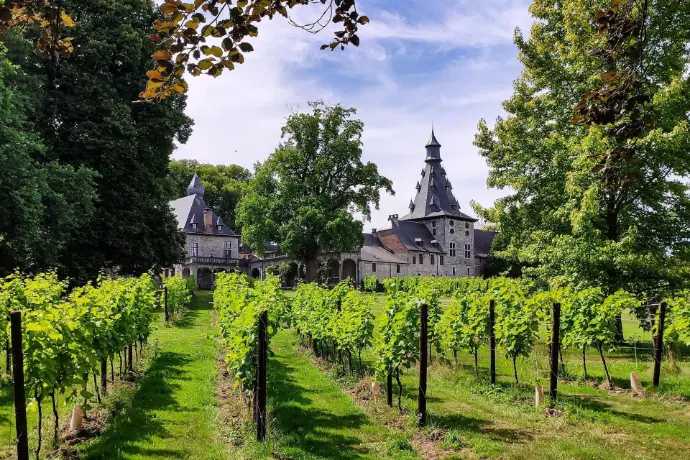BIOUL CASTLE
Set within 30 hectares of stunning countryside in Anhée, Bioul castle stands proudly above the Meuse Valley. A true architectural gem, it reflects both its medieval origins and its long-standing residential heritage. Owned by the Vaxelaire family since 1906, the fifth generation now passionately manages the estate.
PRESENTATION
Originally built in the 11th century as a defensive fortress by the d’Orbais family, the castle later passed through the hands of several noble families, including the de Jauche lineage and the Barons of Brandenburg. In 1554, a fire set by the troops of King Henry II marked a turning point, transforming it into a stately residence.
In the 19th century, François Vaxelaire, founder of the “Au Bon Marché” department stores, purchased the castle and undertook major renovations. Since 2015, Bioul has been revitalised with the creation of an organic and biodynamic vineyard, making it a must-visit destination for wine tourism.
CITADEL OF DINANT
Perched atop a rocky promontory, Dinant Citadel offers a stunning panoramic view over the River Meuse.
Owned by the de Villenfagne family, this historic fortress takes visitors on a journey through 1,000 years of history.
PRESENTATION
The first fortifications were built in the 10th century to protect the Meuse Valley and the town of Dinant. The current citadel, constructed by the Dutch in 1818, stands on the foundations of earlier medieval structures.
Dinant’s past has been marked by key historical events, including the sacking of the city by Charles the Bold in 1466, the fortification works by Vauban, Louis XIV’s renowned military engineer, and the fierce battles between French and German forces during World War I. In August 1914, 674 civilians lost their lives in a tragic massacre.
Immersive exhibits and a dedicated World War I museum space allow visitors to relive these dramatic events.
CORROY CASTLE
Located in Gembloux, Corroy Castle is a striking 13th-century medieval fortress built by the souvereign count Philip of Vianden. Recognised as an exceptional heritage site of Wallonia, it is one of the best-preserved medieval castles in Europe.
Owned by the de Trazegnies family since the 19th century, it is now managed by Marquis Olivier de Trazegnies on behalf of the Royal Association of Historic Residences and Gardens of Belgium.
PRESENTATION
Built to defend the southern border of the Duchy of Brabant, this moated castle stands out with its imposing towers and fortified entrance. Inspired by the Philipian design of the Louvre, the castle belonged to several prominent families before being passed down through inheritance to the Trazegnies family.
Over the centuries, the castle evolved to meet military advancements, including the addition of gunports. In the 18th century, extensive renovations improved its living spaces, creating grand apartments and prestigious salons. In the 19th century, the dining hall was adorned with marble and paintings by Jean Robie, while the chapel and vestibule were redesigned in a neo-Gothic style. The first salon featured magnificent paintings from the 1770s, originally coming from the former Villegas hotel in Brussels.
FREYR CASTLE
Nestled along the Meuse River near Dinant, Freÿr Castle was originally a fortress before evolving into a magnificent Renaissance residence.
Passed down through the Spontin, Laubespin, and Bonaert families, the estate is now managed by the Domaine de Freÿr non-profit organisation.
PRESENTATION
Originally built in the 14th century by Jean d’Orjo, Freÿr Castle was destroyed in 1554 and rebuilt in 1571 by Guillaume de Beaufort-Spontin.
In the 17th century, Hubert de Spontin transformed it into a Renaissance-style country residence and designed its gardens, which were later redesigned in the French style in the 18th century.
In 1675, it hosted negotiations between Louis XIV and Charles II of Spain, leading to a trade agreement restoring commerce along the Meuse.
After turbulent post-revolutionary times, the castle flourished once more before being requisitioned as a German military hospital in 1914.
Restored after the war, it was opened to the public in the late 1940s. Its stunning gardens, with terraces, fountains, and centuries-old orange trees, offer breathtaking views of the Meuse.







